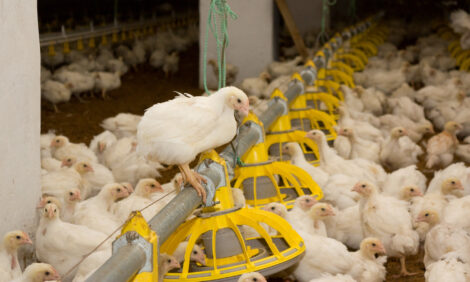



The Value Of Poultry Litter
By Casey W. .Ritz, Extension Poultry Scientist, The University of Georgia - Poultry litter is perhaps one of the most valuable and yet under appreciated by-products that a poultry farm generates. With the rising cost of commercial fertilizer, poultry litter becomes a more valuable and sought after commodity for crop and forage production.As farmers and landowners substitute poultry litter for commercial fertilizer, they find that they can save substantially on fertilizer costs and provide the same needed macro and micro nutrients for plant growth. Additionally, using litter properly provides the opportunity to recycle nutrients, which can reduce the potential for surface and groundwater contamination from over application.
The nutrient composition of poultry litter can be quite variable, but the average analysis for N-P2O5-K20 per ton of litter is approximately 60-55-45 (Table 1). The phosphate and potash found in litter are plant available in the year of application while typically 50-70% of the total nitrogen is available. The remaining nitrogen is slowly released over time. Fields that have received frequent litter applications have residual nitrogen that is available to plants. By accounting for nitrogen residuals, farmers can reduce litter application rates on fields and still maintain desired yields. The use of pre-side dress nitrogen testing is recommended as an effective tool to accurately determine residual soil nitrogen levels in row cropping situations.
The economic value of poultry litter is frequently and incorrectly considered to be less than the time and effort needed for handling and transport. Proper storage, handling, and spreading of litter as a fertilizer does have an associated cost which may seem prohibitive when the real value of poultry litter is not understood. Table 1 estimates the value of broiler litter based on current commercial nitrogen costs at 47 cents per pound, phosphate at 37 cents, and potash at 25 cents and at 1st year efficiency factors of 70, 80, and 100%, respectively. Currently broiler litter sells on average for $10 per ton.
Three tons of broiler litter per acre (which would deliver approximately 150 lbs N) purchased for $30, supplies the same nutrients (N-P-K) in an equivalent commercial fertilizer application costing $179 - a $149 per acre savings. Based on litter nutrients alone, that same 3 tons purchased for $30 has an approximate nutrient value of $142. The Georgia poultry industry produces approximately 2.0 million tons of litter a year. Based on the nitrogen retail value, this material would be worth 40 million dollars.
Getting poultry litter to the acreage on which it is needed can be problematic due to trucking and transport constraints. Hauling costs for a 25 ton tractor trailer load of litter is roughly $3.00 - 4.00/mile. This would be $0.12 to $0.16/mile/ton. Field application equipment and labor to spread the material must also be addressed. While trucking and application costs may limit the distance that raw litter can be transported and land applied, the value of poultry litter as an economical fertilizer is quite evident.

In addition to the N-P-K macro-nutrients, many micro-nutrients that are required for optimal plant growth such as magnesium, manganese, boron, zinc, and sulfur are present in poultry litter. Litter also contains large amounts of organic matter, which will improve soil structure and tilth. Micronutrients and tilth are additional benefits of poultry litter that are difficult enumerate. Applying litter to fields will reduce or eliminate the need to apply micronutrients such as boron and zinc for row crops such as corn and decrease the need for lime addition to meet magnesium needs or for soil pH adjustment.
In order to effectively utilize poultry litter and take advantage of the nutrients as a fertilizer source, it must be applied at the proper time and in the appropriate amount. Obtaining a soil test and a manure nutrient analysis is essential for good manure management and utilization.
Additional information on best management practices associated with the use poultry litter can be found at: http://www.poultry.uga.edu/extension/index.htm.
Source: University of Georgia - Poultry Science - March 2006










